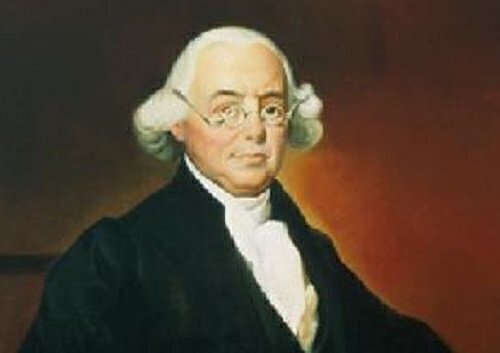December 12 is a big anniversary for those of us in Pennsylvania: It’s the day the James Wilson led an emotional effort to approve the proposed U.S. constitution in the Keystone state, in a big step toward the eventual ratification of our Founding document.
 Delaware was the first state to ratify the Constitution, on December 7, 1787, but Pennsylvania was the first big state to confront a pitched debate between supporters of the sweeping changes in the Constitution, and the Anti-Federalists, who feared centralized power and insisted on a Bill of Rights to accompany the Constitution.
Delaware was the first state to ratify the Constitution, on December 7, 1787, but Pennsylvania was the first big state to confront a pitched debate between supporters of the sweeping changes in the Constitution, and the Anti-Federalists, who feared centralized power and insisted on a Bill of Rights to accompany the Constitution.
Pennsylvania was the second biggest state in the new union, and Philadelphia was the second-biggest city; the state had a diverse population, and no shortage of critics who found the Constitution lacking.
The convention was called in what we know today as Independence Hall on November 21, 1787. Some anti-Federalists had to be forced to attend a session to approve the convention.
The convention didn’t lack for star power. Benjamin Rush also attended, as did Anthony Wayne. But Wilson was only member of the Pennsylvania delegation from the Constitutional Convention in Philadelphia that summer to attend the state convention.
During the 1787 Constitutional convention, Wilson was a powerful advocate for the new, expansive document, along with James Madison and Gouverneur Morris.
Wilson made his intentions clear when he spoke about the proposed Constitution in October 1787 in a Pennsylvania State House session. His speech was meant to counter arguments made by George Mason, a fellow member of the Philadelphia convention that summer who refused to sign the proposed Constitution.
“Regarding [the Constitution], then, in every point of view, with a candid and disinterested mind, I am bold to assert that it is the best form of government which has ever been offered to the world,” Wilson said at the end of his stirring speech on October 6, 1787.
Wilson also tackled critics who demanded a Bill of Rights.
“To those who think the omission of a bill of rights a defect in the proposed constitution; for it would have been superfluous and absurd to have stipulated with a federal body of our own creation, that we should enjoy those privileges of which we are not divested, either by the intention or the act that has brought the body into existence,” Wilson argued.
Going in to the state ratification convention, the pro-Constitution forces had a two-thirds majority at the meeting. On December 12, 1787, the Pennsylvania convention ratified the document by a vote of 46-23. But the anti-Federalists, led by Thomas McKean, made a powerful argument that was sent to the other states that was part of a wide effort to reject the new Constitution.
The document was called the Pennsylvania minority report, and it said that, “we entered on the examination of the proposed system of government, and found it to be such as we could not adopt, without, as we conceived, surrendering up your dearest rights.”
It also spelled out many concepts that would be included in the Bill of Rights approved by the First Congress and ratified by the states, and set the ground rules for ratification debates in the other states.







